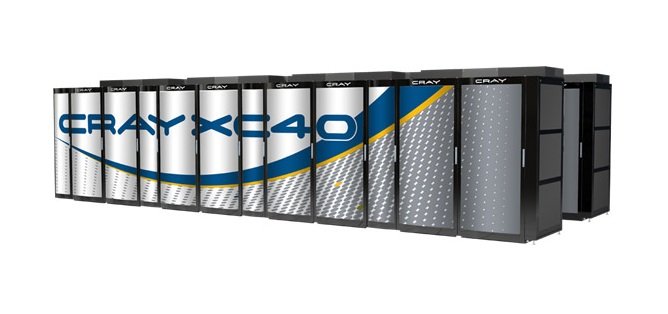Supercomputing specialist Cray's new Haswell-powered XC40 machine speeds past the XC30 model, and has a new CS400 cluster system to accompany it.
The new models have double the performance of the previous generation XC and CS systems, says the venerable high-performance computer maker, and are built around Intel’s Xeon E5-2600 v3 (Haswell) chips, officially launched in September.
XC40 also introduces the optional DataWarp technology which connects flash-based storage directly to compute nodes in order to accelerate I/O operations.
"Los Alamos National Laboratory has been investigating burst buffer capabilities for years and the DataWarp technology in the Cray XC40 Trinity system will provide the first multi-petabyte, multi-terabyte-per second burst handling capability ever," said Gary Grider, HPC lead at Los Alamos.
"We expect DataWarp to be the first step in leveraging node-local non-volatile storage, which will decrease our TCO going forward."
Harder, better, faster
Cray is currently responsible for three out of top ten most powerful supercomputers in the world, including Titan, a 560,640-core beast which was crowned the fastest in 2012, but has since shifted to the second position.
The new generation XC40 and CS400 are based on latest Xeon E5-2600 v3 CPUs, which feature up to 18 cores and increase the number of sensors on the chip from three to 22, enabling much easier monitoring and management.
The systems can be equipped with NVIDIA Tesla GPUs and Intel Xeon Phi coprocessors, and shipped in air- or liquid-cooled cabinets codenamed ‘AC’ and ‘LC’ respectively.
The machines offer theoretical calculation speed of up to 100 petaflops per system. To achieve this level of performance, they use the proprietary Aries system interconnect, Dragonfly network topology and Cray Linux Environment, an operating system designed specifically for HPC applications.
DataWarp, available as an added feature, improves performance even further by creating a central pool of fast I/O resources and bringing the applications as close to the compute as possible.
Whereas XC40 ships as a single system, CS400 cluster supercomputers consist of a number of server ‘building blocks’ capable of scaling to 40 peak petaflops.
They are managed via the Cray Advanced Cluster Engine, a software suite designed to provide network, server, and storage management capabilities that are necessary to run large, complex technical applications. Meanwhile the Cray Programming Environment simplifies configuration of clusters.
"Our new next-generation systems include support for future processors and accelerators, and currently feature improvements in the Cray Programming Environment that are designed to dramatically improve performance and efficiency across both systems,” said Barry Bolding, Cray's VP of marketing and business development.
The company has already sold the new systems to the Korean Meteorological Administration, Swiss National Supercomputing Centre (CSCS) and the US Department of Defense. The Swiss plan to use their XC40 for tasks including research in material science, molecular biology, climate and atmospheric modeling.
"It will allow us to move HPC technology into new domains, such as data analytics, and greatly simplify our system setup through the integration of visualization and pre- and post-processing systems into our main supercomputing platforms. We will add new services for university partners that will greatly enhance productivity of scientists," explained professor Thomas Schulthess, director of CSCS.

